Windows computers have a feature that allows you to connect the external display(s) by different methods. One of these methods is by using the HDMI cable. But when some users tried connecting the external display through an HDMI cable, it went black. For some users, the laptop screen went black after connecting an external display through an HDMI cable. If your computer screen or external display goes black when HDMI is plugged in, you can follow the suggestions provided in this article to fix this issue.
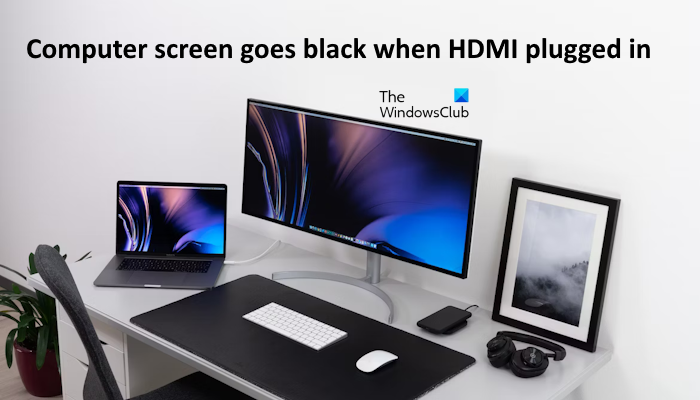
Computer screen goes black when HDMI plugged in
There can be multiple causes of this issue, like a faulty HDMI cable, a faulty HDMI port, and so on. However, the chances of the HDMI port being faulty are less. Use the following fixes if your computer screen or external display goes black when HDMI is plugged in.
- Wrong HDMI input selected
- Try different Projection Settings
- Change your monitor refresh rate
- Faulty HDMI port or loose HDMI cable
- Make sure that the Display Adapter is enabled
- Is there any dedicated key on your laptop?
- Uninstall and reinstall your display driver
If your device does not receive an input signal from the computer to which it is connected through the HDMI cable, it remains black. Sometimes, the black screen may be accompanied by a message summarizing the problem’s cause (e.g. no input).
If you’re using an HDMI cable to connect your computer to an external display, it must be set up correctly. An incorrect HDMI setup can also lead to a black screen.
Let’s talk about these solutions in detail.
1] Wrong HDMI input selected
If you are connecting your TV to your computer via an HDMI cable and the TV screen goes black, there is a possibility that you have selected the wrong HDMI input (if applicable). Some TVs show multiple options in HDMI. You have to select the right option.
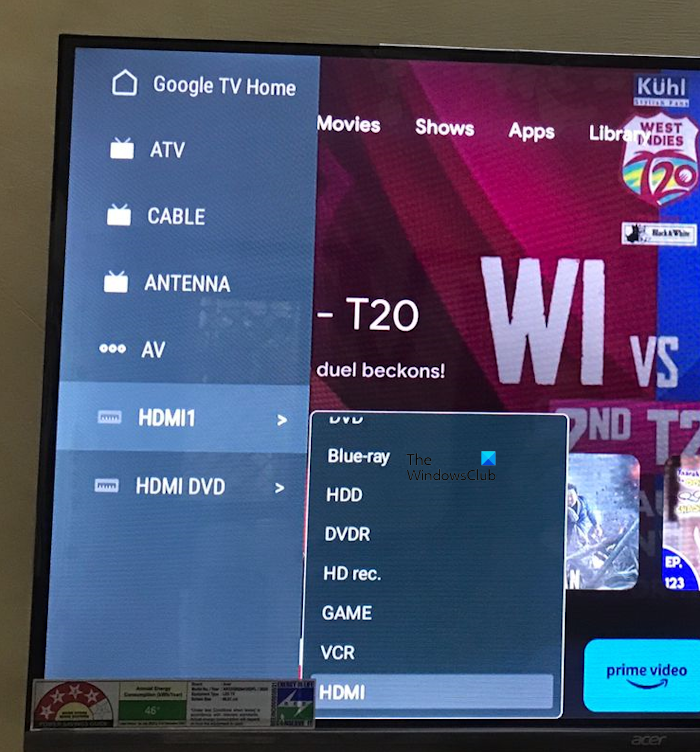
As you can see in the above screenshot, the HDMI 1 input shows different options. Select the right HDMI option; otherwise, your TV screen remains black even after getting the input signal from your PC.
Related: The bottom half of screen is black on my laptop
2] Try different Projection Settings
In Windows computers, there are different projection settings. It is possible that you have selected the wrong projection option. Try different projection settings to connect your computer to the TV. Follow the below instructions:
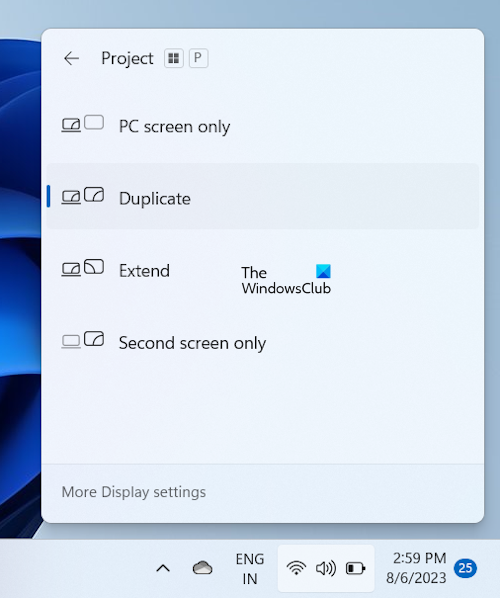
Press the Windows key on your keyboard and then tap the “P” key while holding the Windows Key. After that, select any of the following options one by one and see which one works for you.
- PC screen only – Content will only be displayed only on the laptop or desktop.
- Duplicate – The same content will be displayed on the laptop screen and monitor.
- Extend – You can move items between the two displays when this option is selected.
- Second screen only – The laptop’s screen will be temporarily disabled, and the desktop is displayed on the secondary display.
3] Change your monitor refresh rate
The refresh rate of a display is the number of times per second that it refreshes on the screen. The refresh rate determines how smoothly a motion appears on your screen. The below steps will help you change your monitor refresh rate.
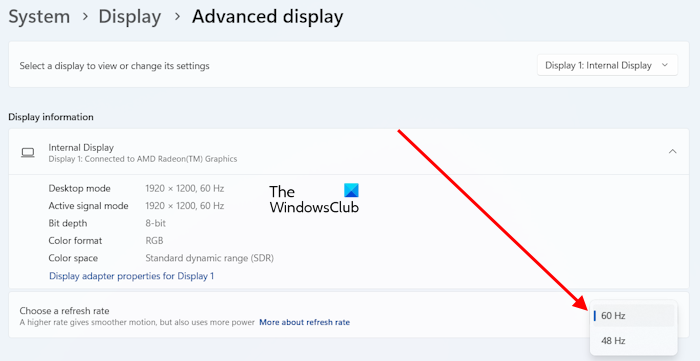
- Open your Windows Settings.
- Select Display and then select Advanced Display.
- Select the required Display from the drop-down.
- Under the Choose a refresh rate section, select a different refresh rate and see which one works for you.
This solution worked for some users. Hence, it may also work for you.
4] Faulty HDMI port or loose HDMI cable
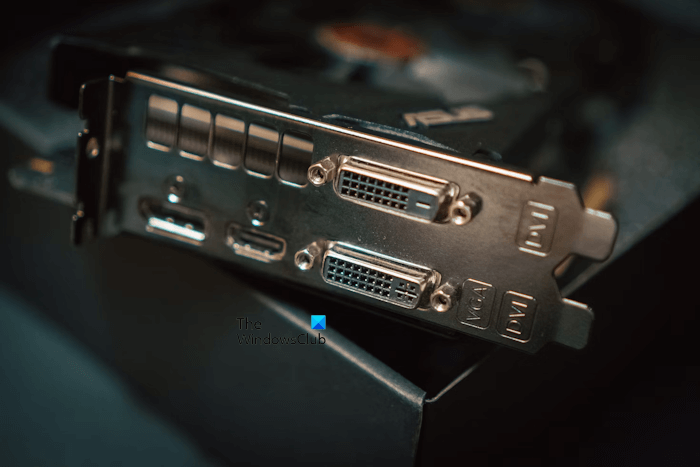
Make sure your HDMI cable is not loose or your port is not faulty as this can be a big reason why your device screen goes black when HDMI is plugged in. Some output devices have multiple HDMI ports too, so you can always check those as well. This will let you know whether the HDMI port is faulty or not.
Another possibility is you may have a faulty HDMI cable. In this case, you need to change your HDMI cable.
5] Make sure that the Display Adapter is enabled
If the Display Adapter is disabled, your second display will remain black. You can check this in the Device Manager. First, connect your display or TV to your computer through an HDMI cable, then follow the steps below:
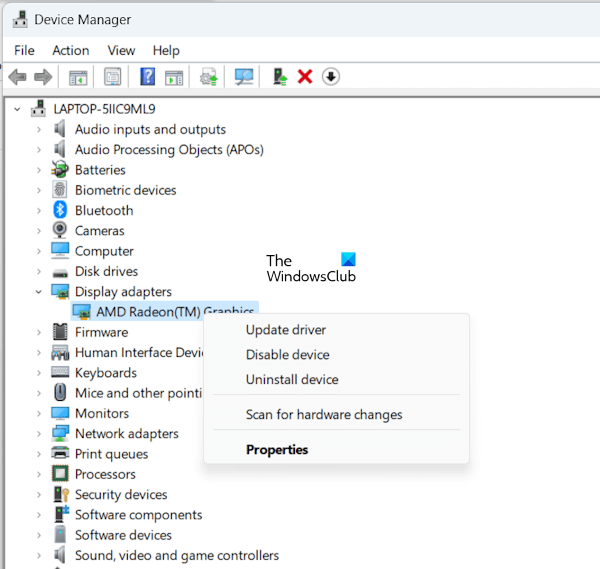
- Open the Device Manager.
- Expand the Display adapters branch.
- Right-click on your Display adapter and select Enable device. You will see the Enable device option only if the Display adapter is disabled.
After this, the problem should get fixed.
6] Is there any dedicated key on your laptop?
Some laptops have a dedicated Function key to change the Display modes. You will see this information on the official website of your computer manufacturer. For example, on my ASUS Vivobook laptop, the F8 function key toggles the Display mode.
Some users reported that this solution worked for them. Try pressing these dedicated key(s) (if applicable) and see if it helps.
7] Uninstall and reinstall your display driver
If your computer screen goes black after connecting it to the external display via an HDMI cable, there may be an issue with your display driver. In this case, uninstall and reinstall your display driver. First, download the latest version of your display driver from the manufacturer’s website. Now, uninstall your display driver via the Device Manager or by using the DDU. Now, run the installer file to install the display driver manually.
I hope this helps to resolve your problem.
Can a bad HDMI cause black screen?
Yes, bad HDMI can cause a black screen. If your HDMI cable is bad, the external display will not get a signal from your computer due to which either the external display remains totally black or shows the No Signal message.
How do I know if HDMI is bad?
You can check whether your HDMI is bad or not by inserting your HDMI into a different port. If this works, your HDMI cable is not faulty. Another way to check HDMI cable is to connect it to another display (if available).
Related article: HDMI Audio device not detected in Windows.
Leave a Reply